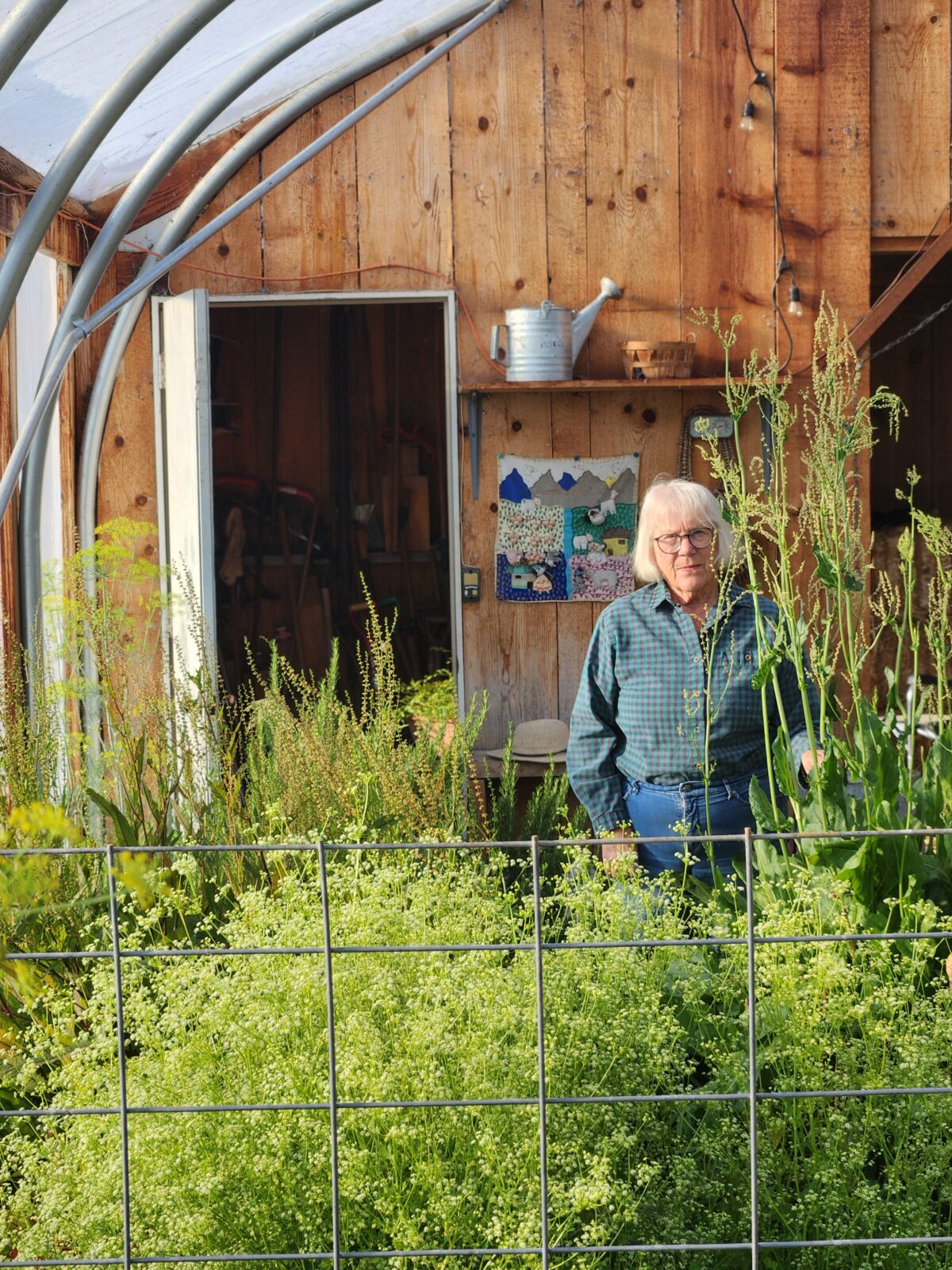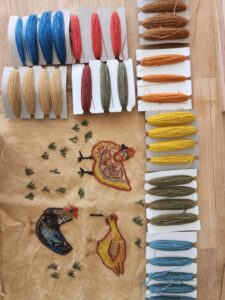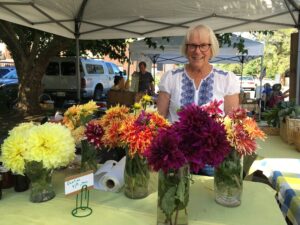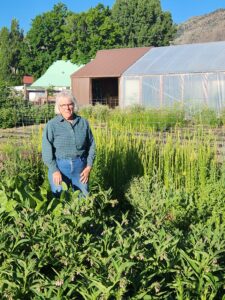Hope and Practice
To celebrate Seed Savers Exchange's 50th anniversary, we are featuring the work and inspiration of Exchange listers in the "Hope and Practice" series.

If you stop by Kay Antúnez de Mayolo’s farmstand at Modoc Harvest’s Food Hub and farmer’s market, on the Great Basin’s western edge in rural northern California, she might sell you “regular” lettuces or tomatoes and let you be on your way. She’s not pushy about her produce. But if you look a little harder, you might notice that the baskets of cherry tomatoes are cut with something curious: a ground cherry called ‘Capuli’ in Peru, ‘Poho’ in Hawaii, and (long ago) ‘Cape Gooseberry’ in the English colonies.
“I learned that I could turn more people on to ground cherries if I mixed them with a ‘gateway fruit’,” Kay admits with a laugh. “I understand that market-goers don’t just want the strange stuff I like to grow, but they’ll try something new—mouse melons, sorrels, lots of unusual herbs—if I get them talking.”
At age 78 and at the helm (with her husband, Erik) of a hoop house and four acres of drip-irrigated produce and fruit trees, Kay is actually a preeminent ethnobotanist specializing in native dye plants. Her 1989 master’s thesis, cataloging and collecting 56 plants historically used by the masterful ancient Peruvian artisans as textile dyes, is still cited by researchers today, and her house gardens are burgeoning with dye plants that thrive in the high desert, including ‘Hopi Dye’ sunflower, madder, Japanese indigo, and weld (all available on the Exchange).

Kay found the Exchange and joined as a seed saver (“a lifetime membership for just $100!”) in the late 1980s. She became friends with the late Suzanne Ashworth, a longtime Seed Savers Exchange advocate and author of the bestselling Seed to Seed. “We were always together,” Kay says—by which she means, their names were always near each other alphabetically in the Exchange. The two growers—who both taught classes at American River College in Sacramento, California—struck up a camaraderie rich with “heavy-duty home gardening,” sleuthing around to trace heirloom crops right in their own neighborhoods, and advocating for seed saving.
In her later career, Kay turned toward environmental education, serving for 24 years as the Project Learning Tree state coordinator for California’s Department of Forestry and Fire Protection. When she retired in 2012 and moved to rural Modoc County, she fully expected to scale back and quietly integrate into her new community, Surprise Valley, an area settled in the aftermath of the Civil War and California’s gold rush and still the ancestral homeland of the Northern Paiute Gidutkad Band.

Around the same time, SSE began selling heritage fruit trees, and she picked up a few “interesting-sounding” varieties. “Some didn’t do well, but in trying to figure out how to grow apples here, I became aware of several old apple orchards in the county and came to find out that the original Homestead Act land owners established apple orchards for cider vinegar, to ‘prove up’ their claims.” But by the turn of the 21st century, many of these surviving trees were not clearly identified, posing a mystery Kay couldn’t resist solving.
“What are these old apple varieties, and can they be reintroduced in this region?” she wondered. Soon she helped start Modoc Harvest, a nonprofit, to promote local food production with a farmer’s market and food hub. She rounded up volunteers to catalog more than 200 “heritage” apple trees in the county. This led, naturally, to offering classes on apple grafting and how to prune and rejuvenate trees. “Locals were interested in their old trees, especially after we held tastings and helped them identify the apple varieties on their property,” Kay recalls.
This, she says, is the magic of inviting your community into your garden, just to look at something unusual and crack open some curiosity about how it got that way. “I’m a sucker for stories,” she says of the many magazines and journals she reads—including the Seed Savers Exchange Heritage Farm Companion—along with virtual meetups she now attends, including SSE’s 2024 virtual conference.

She’s also a voracious reader of seed catalogs and saves them for both the lore and the literal seed-saving know-how they contain, including all those massive early newsprint editions of the Exchange Yearbook.
“If I could recommend just one thing,” she says, “it’s one-to-one interaction, specifically in the mentoring of new growers.” A love of learning, she says, has no better seed bed than soil. In the meantime, she’s off to new projects, including a botanical dye workshop she’s started with a yarn shop owner in the next town up.
“And I’m now interested in hydrangeas,” she adds with a grin. No doubt she’ll find a friend or colleague to learn along with her.
This article by Kristine Kopperud was first published in the 2025 Seed Savers Exchange catalog.
Hope and Practice
To celebrate Seed Savers Exchange's 50th anniversary, we are featuring the work and inspiration of Exchange listers in the "Hope and Practice" series.